Masterpiece Story: Wheatfield with Cypresses by Vincent van Gogh
Wheatfield with Cypresses expresses the emotional intensity that has become the trademark of Vincent van Gogh’s signature style. Let’s delve...
James W Singer 17 November 2024
Red and White Cotton Roses is considered Li Di’s lifetime masterpiece and a masterwork of Chinese huaniaohua.
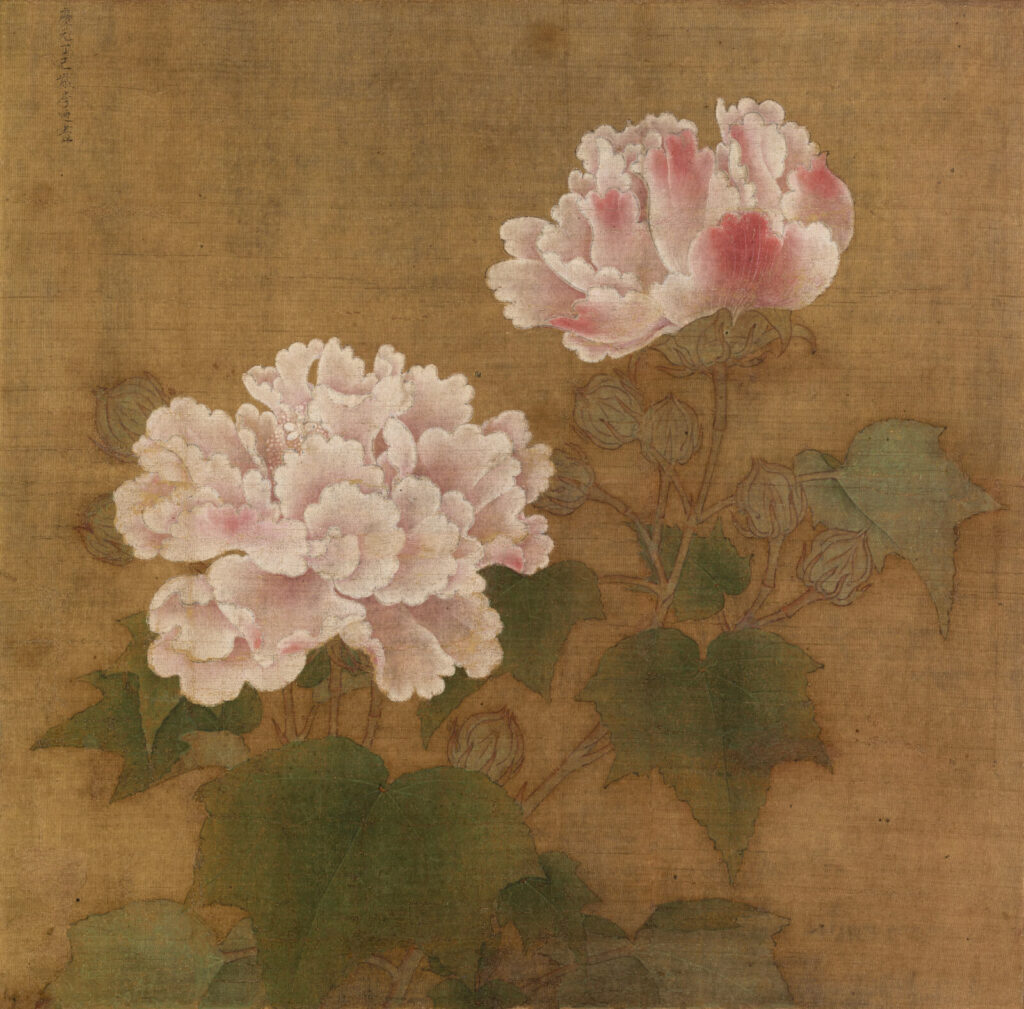
Li Di, Red and White Cotton Roses, Southern Song dynasty, 1197, color on silk, Tokyo National Museum, Tokyo, Japan.
Li Di was a Chinese painter active from 1163 to 1197 during the Southern Song dynasty (1127-1279). He lived in the Southern Song capital of Lin’an (modern Hangzhou), where he worked at the Imperial Painting Academy. Li Di specialized in a subject matter known as huaniaohua (birds and flowers) that focuses on the delicacy and beauty of birds, flowers, fish, and insects. Red and White Cotton Roses is considered Li Di’s lifetime masterpiece and a masterwork of Chinese huaniaohua.
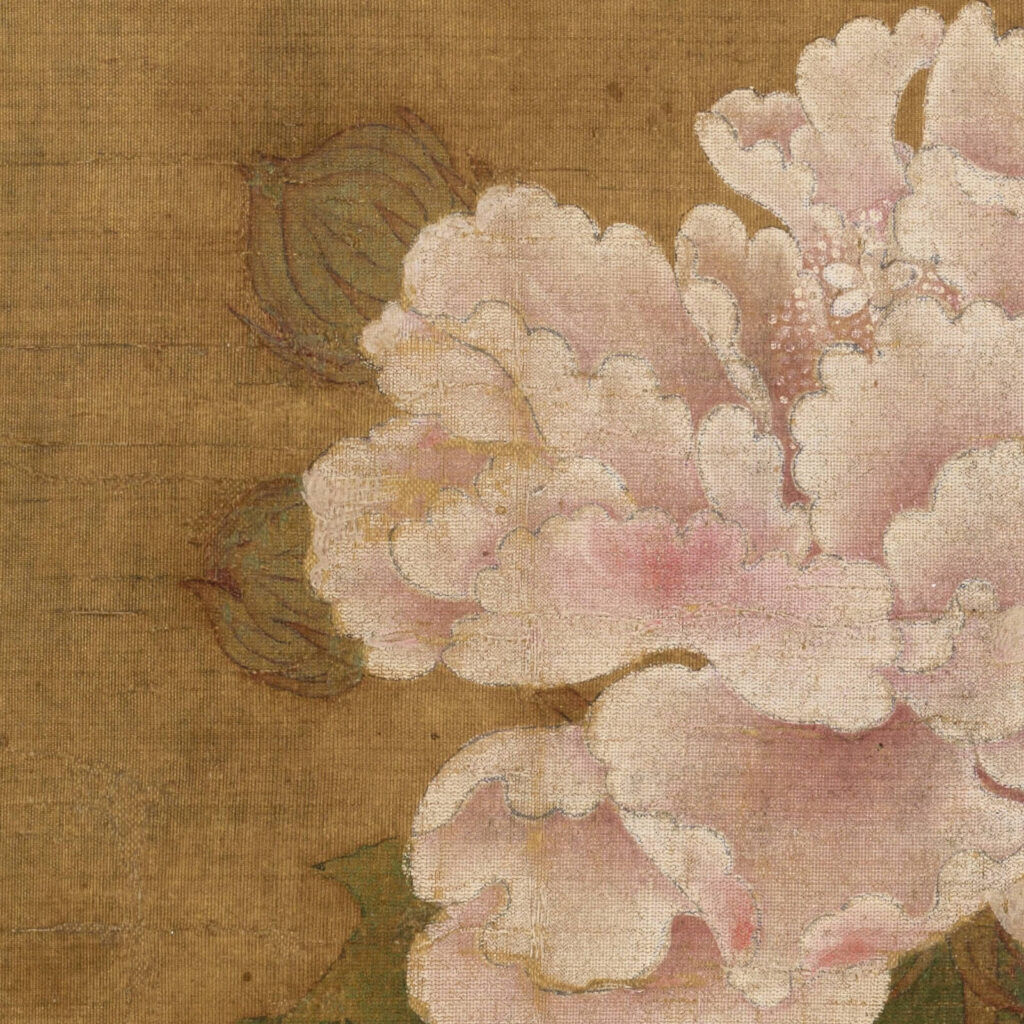
Li Di, Red and White Cotton Roses, Southern Song dynasty, 1197, color on silk, Tokyo National Museum, Tokyo, Japan. Detail.
The almost-square painting is small and measures only 25.5 cm wide (10 in) and 25.2 cm high (9.9 in). It is made from colored inks on woven silk. The painting features two “drunk” cotton roses, known as sui-fuyo in Japan, where the painting is now located. Drunk cotton roses derive their name from their petals’ changing colors. They are pure white at sunrise in the early morning. Then, they gradually turn pink by noon. Finally, they are a bold red by sunset in the late evening.
The flowers’ transformation from white to red is jokingly compared to a face flushed from alcohol, hence “drunk” cotton roses. However, jokes aside, the Chinese still consider these flowers an auspicious symbol of wealth and glory.
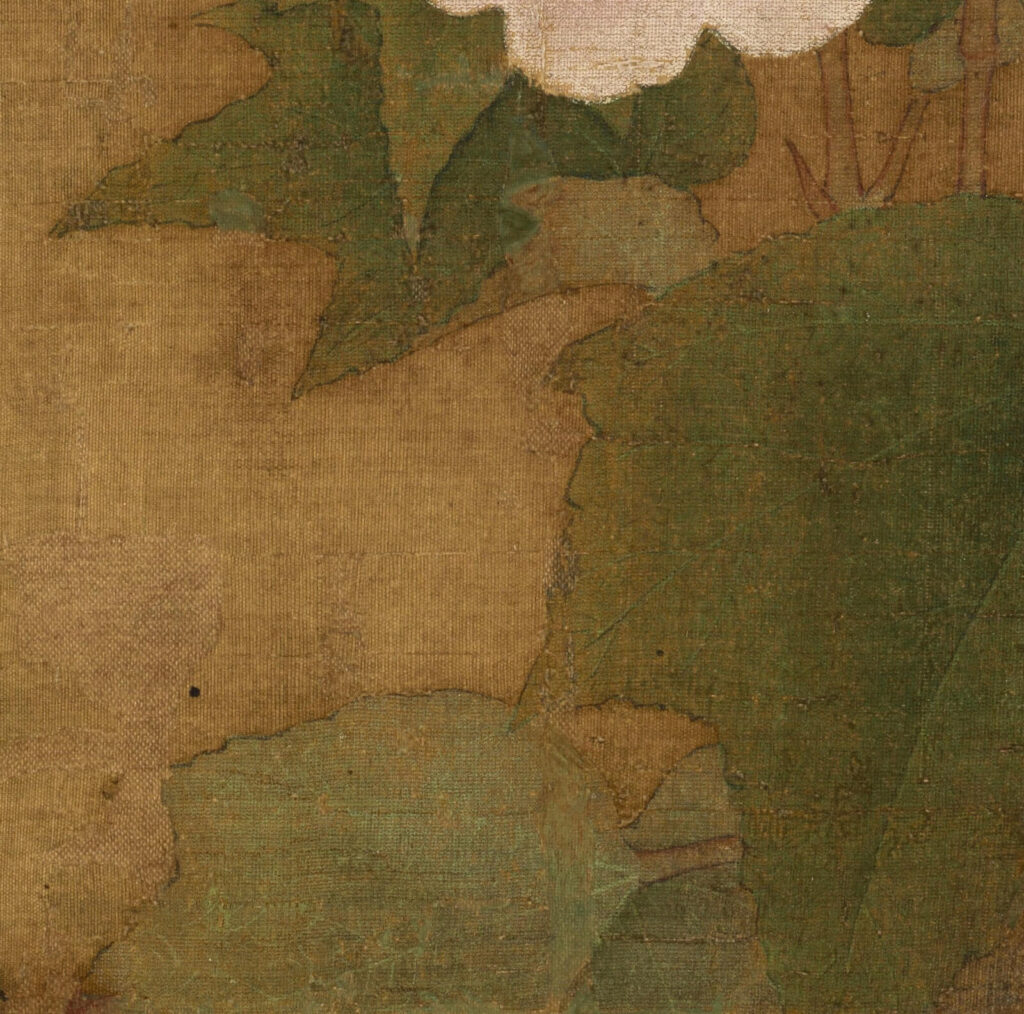
Li Di, Red and White Cotton Roses, Southern Song dynasty, 1197, color on silk, Tokyo National Museum, Tokyo, Japan. Detail.
Huaniaohua is a jewel of Chinese culture, and to many non-Chinese, it represents the most recognizable Chinese painting style. Ironically, huaniaohua does not have Chinese origins and has not always been in their repertoire. Birds and flowers were decorative motifs along the edges and borders of Indian artwork imported during the Chinese Tang dynasty (618-907). Then, Chinese Tang artists copied this decorative edge style for their Buddhist artworks.
It was not until about 100 years later, in the late 10th and early 11th centuries, that birds and flowers became independent subjects. They were no longer relegated to the edges of a composition but became the central composition. Progress another 100 years, and the painterly masters of the Southern Song dynasty, like Li Di, elevated huaniaohua into an internationally recognized genre.
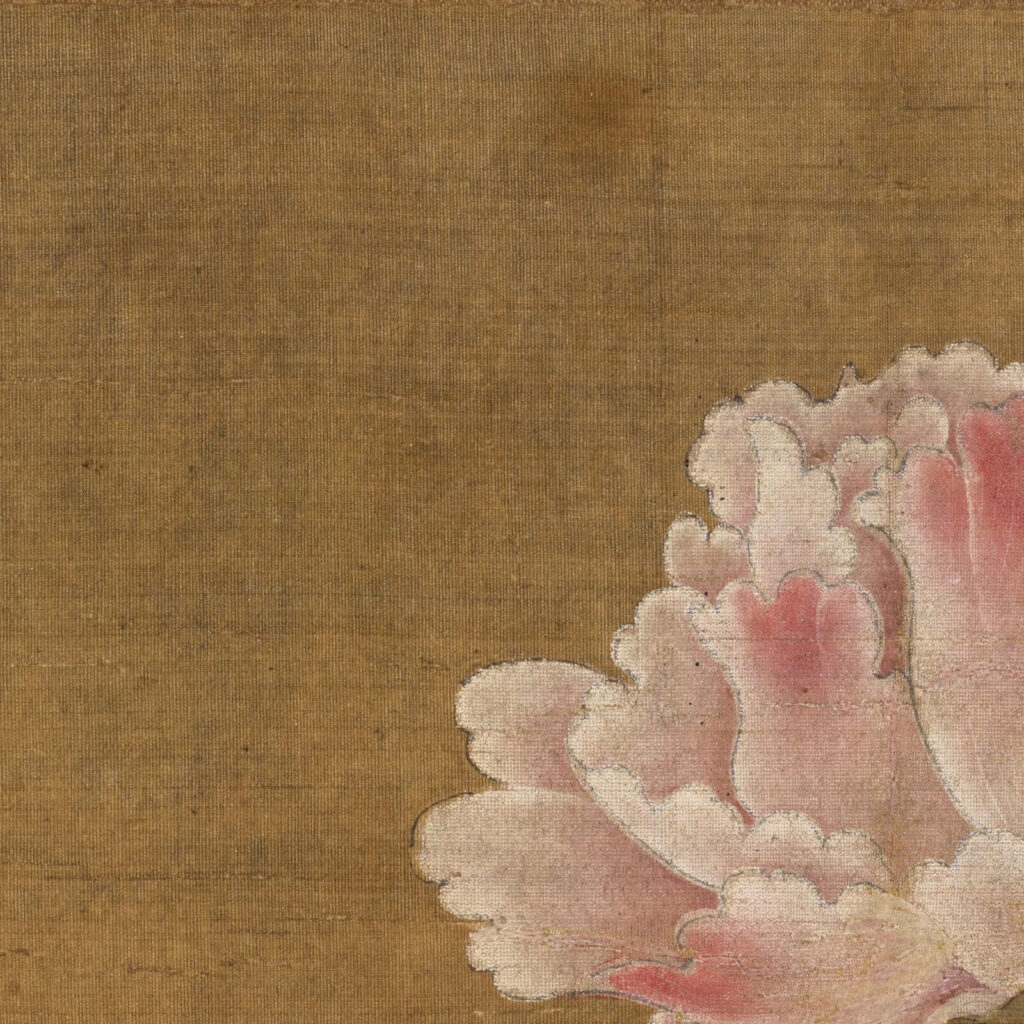
Li Di, Red and White Cotton Roses, Southern Song dynasty, 1197, color on silk, Tokyo National Museum, Tokyo, Japan. Detail.
Li Di was a skilled painter, as seen by his masterful handling of these exquisite flowers. Firstly, the flowers’ petals are realistically depicted with their delicate lines and subtle coloring. They are outlined with a faint wisp of edging to imply where the soft petals end, and the blank cloudy background begins. The petals are also colored in many layers and washes to imply a filtered luminosity and bodily depth, suggesting sunlight entering, bouncing, and passing through the flowers. Also, the red blushes of the white petals are beautifully shaded and finely rendered.
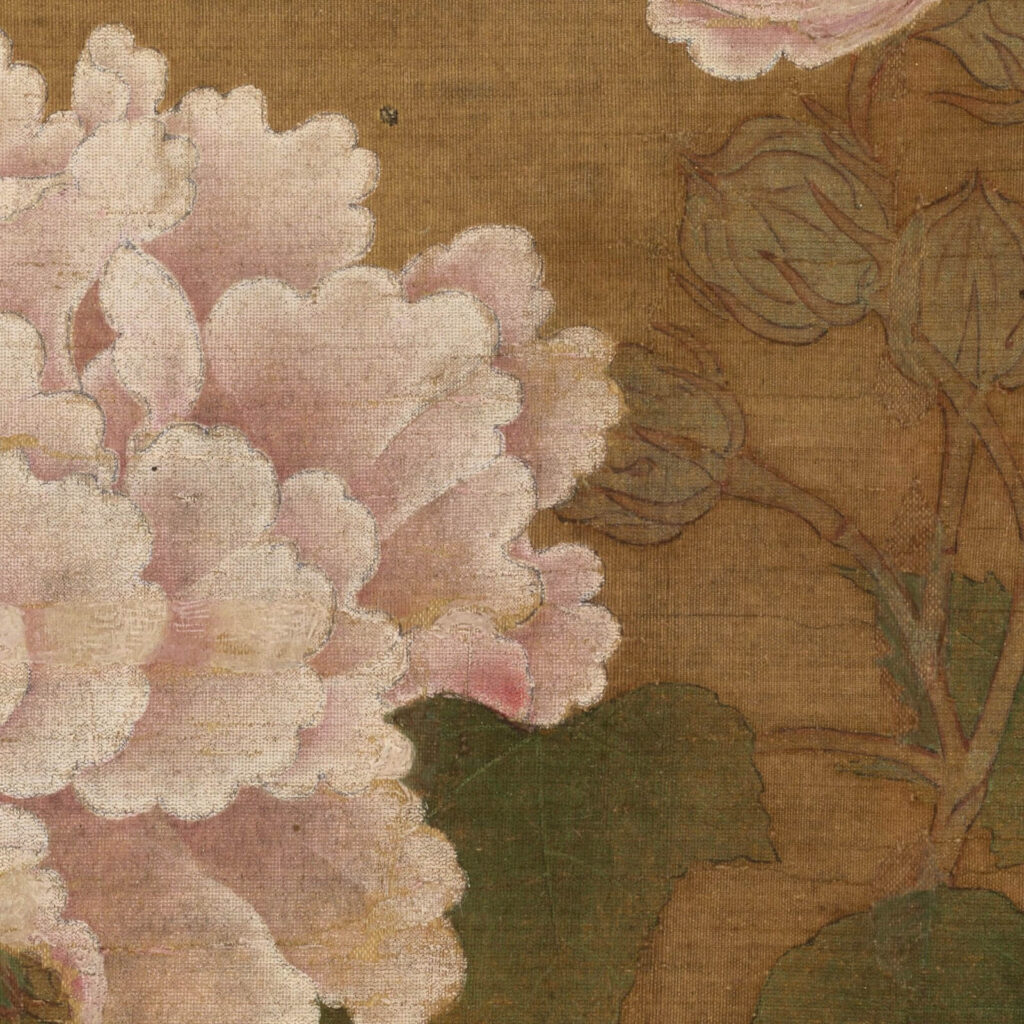
Li Di, Red and White Cotton Roses, Southern Song dynasty, 1197, color on silk, Tokyo National Museum, Tokyo, Japan. Detail.
Secondly, the flowers’ leaves are boldly painted with a more uniform coloring and a sharper outline. They establish a visual contrast to the petals’ delicacy, creating more visual interest in the overall composition. Velvety leaves contrast against silky petals.
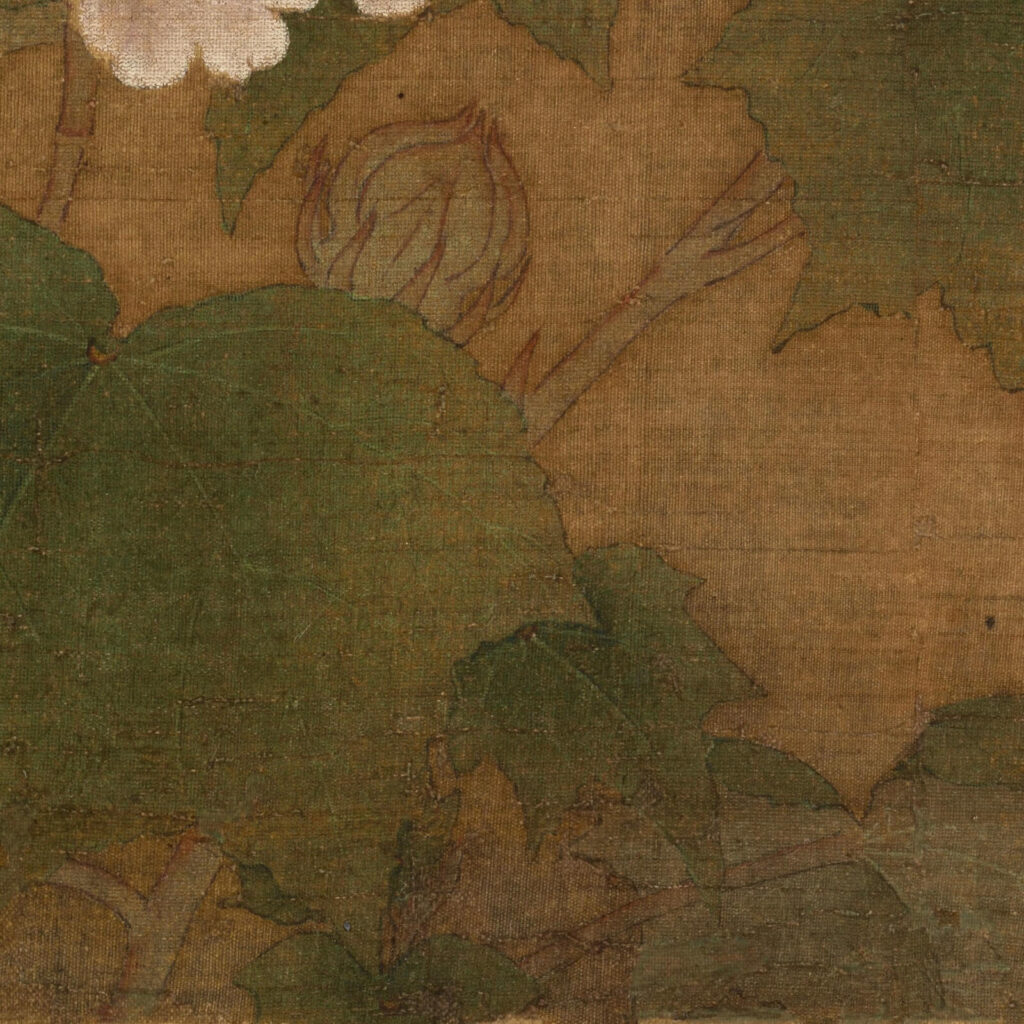
Li Di, Red and White Cotton Roses, Southern Song dynasty, 1197, color on silk, Tokyo National Museum, Tokyo, Japan. Detail.
Thirdly, the background is a blank expanse of subtle cloudiness. It presents a natural and calm backdrop to visually promote the intricacies of the petals and leaves of the flowers. Many art connoisseurs believe that harmony can only be found through a careful arrangement of contrasting and complementing elements. Furthermore, the peacefully uniform background promotes a Chinese poetic ideal of achieving peace and unity with nature.
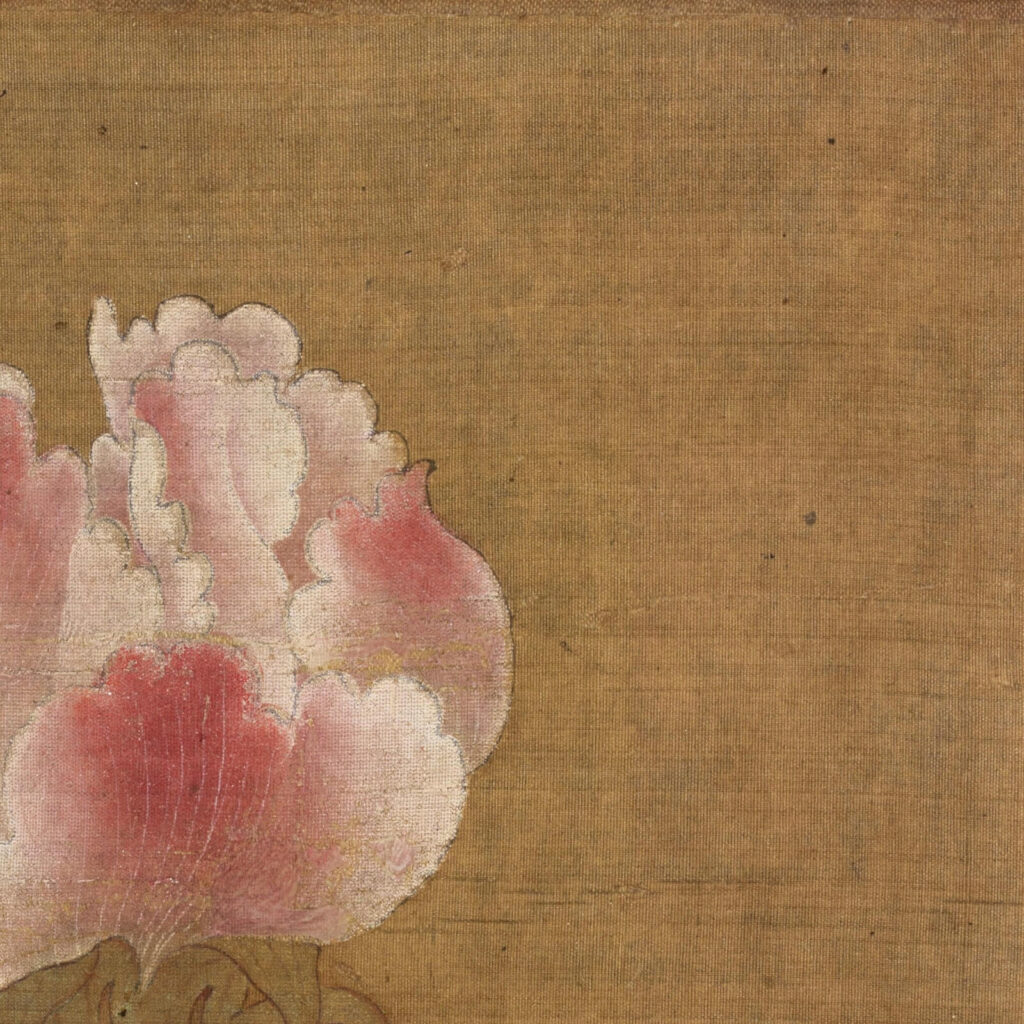
Li Di, Red and White Cotton Roses, Southern Song dynasty, 1197, color on silk, Tokyo National Museum, Tokyo, Japan. Detail.
Vertical calligraphy can be found in the top left corner of the composition. It states that Li Di created this work in the third year of the reign of Emperor Song Ningzong. Using historical records, Emperor Song Ningzong was the fourth emperor of the Southern Song dynasty who ruled from 1194 to 1224, which dates this painting to 1197. This small calligraphic note makes Red and White Cotton Roses one of the few rare examples of a signed and dated work from 12th-century China.
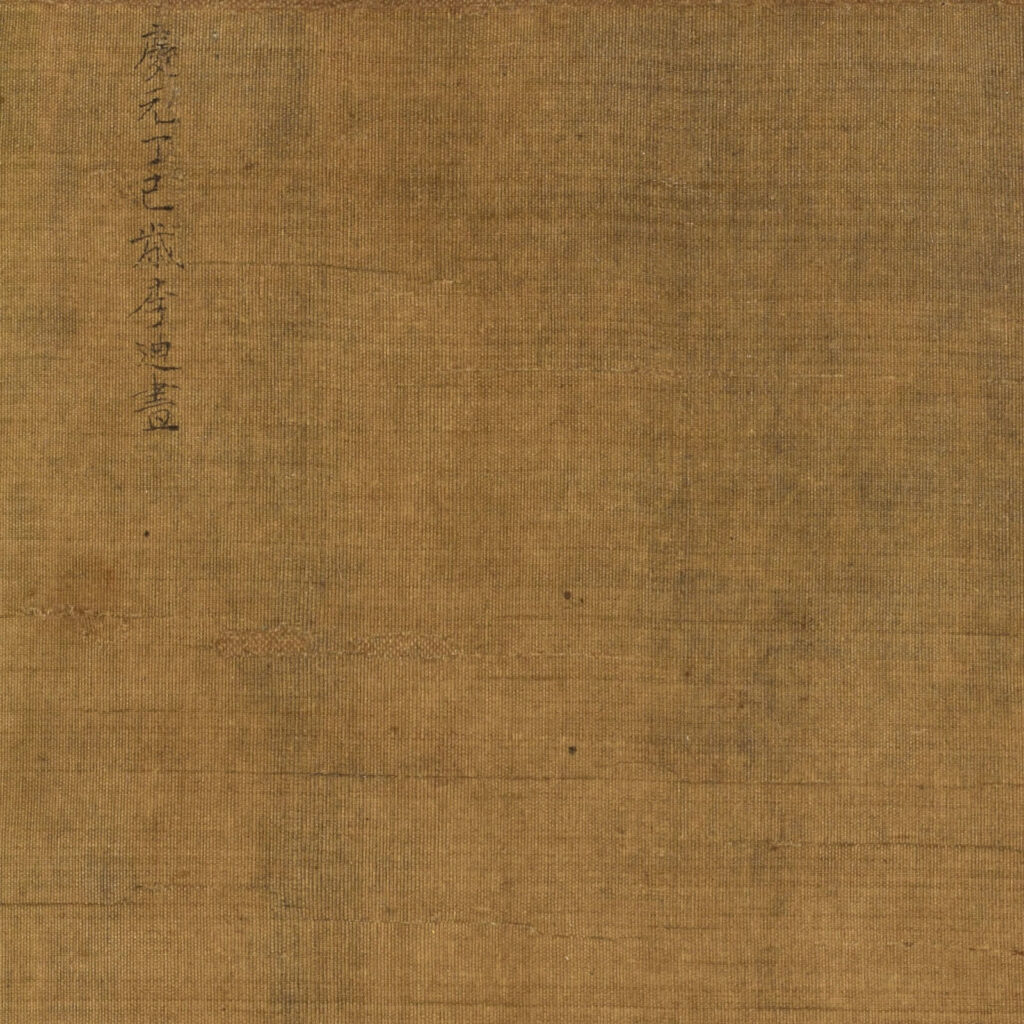
Li Di, Red and White Cotton Roses, Southern Song dynasty, 1197, color on silk, Tokyo National Museum, Tokyo, Japan. Detail.
Modern art historians believe that Li Di created this 12th-century painting as a page in a book similar to a 12th-century illuminated manuscript from Western Europe. However, it was later removed from this now-lost book and brought to Japan in the 15th century, where it was remounted on a hanging scroll.
The Japanese of the Muromachi period (1336-1573) were one of the first international communities to import and appreciate Chinese paintings. Muromachi Japanese found that many Chinese paintings reflected and complemented the aesthetics of their beloved Japanese tea ceremonies.
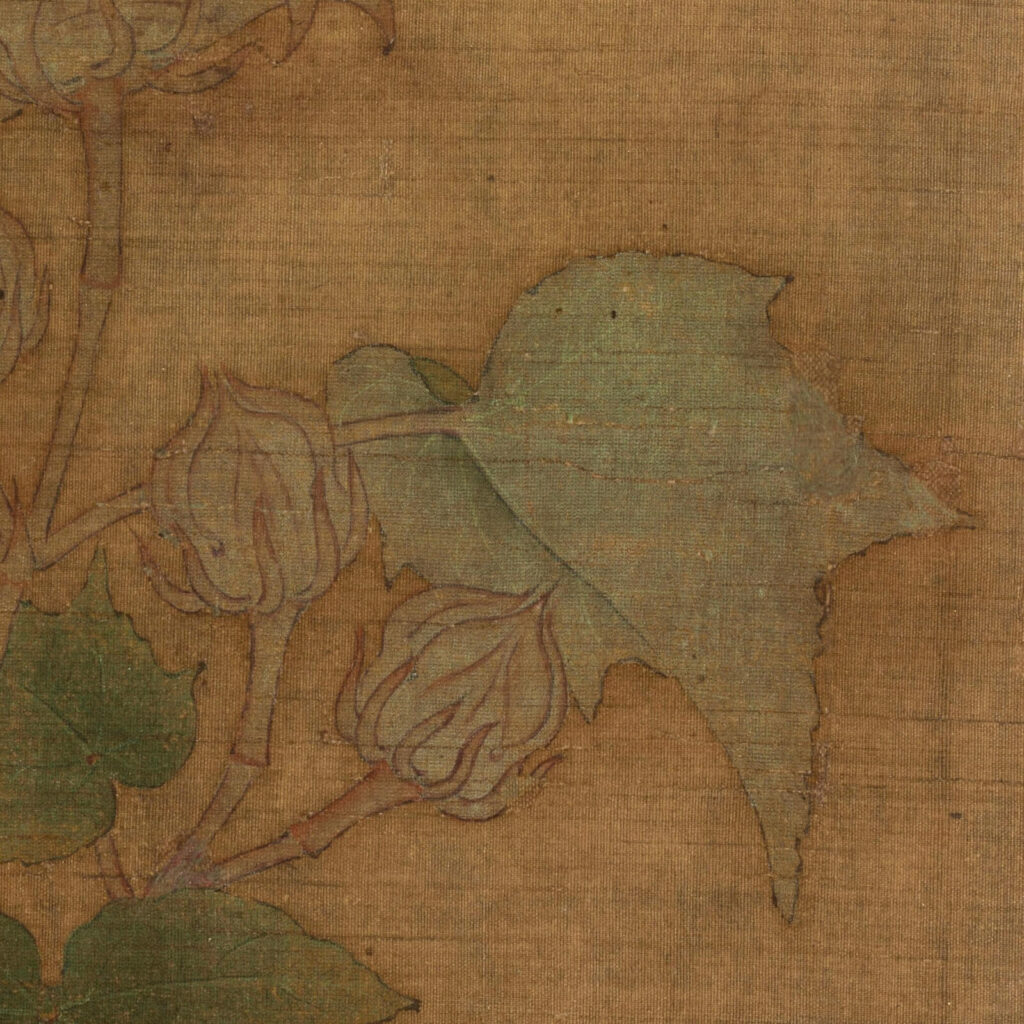
Li Di, Red and White Cotton Roses, Southern Song dynasty, 1197, color on silk, Tokyo National Museum, Tokyo, Japan. Detail.
Today this masterpiece resides at the Tokyo National Museum in Tokyo, Japan. It is a cornerstone of the museum’s Chinese collection and blends China’s artistic legacy with Japan’s cultural heritage. However, these two countries are not the sole beneficiaries of Li Di, Red and White Cotton Roses, or the larger context of huaniaohua. There is an ongoing global appreciation for traditional Chinese art.
Even its monetary price continues to climb as the private art market continually demands more and more pieces. Thankfully, this masterpiece is already in a public museum, ensuring it will not be lost to a private collector. It is a public ambassador of Chinese art, culture, and history for anyone visiting the Land of the Rising Sun.
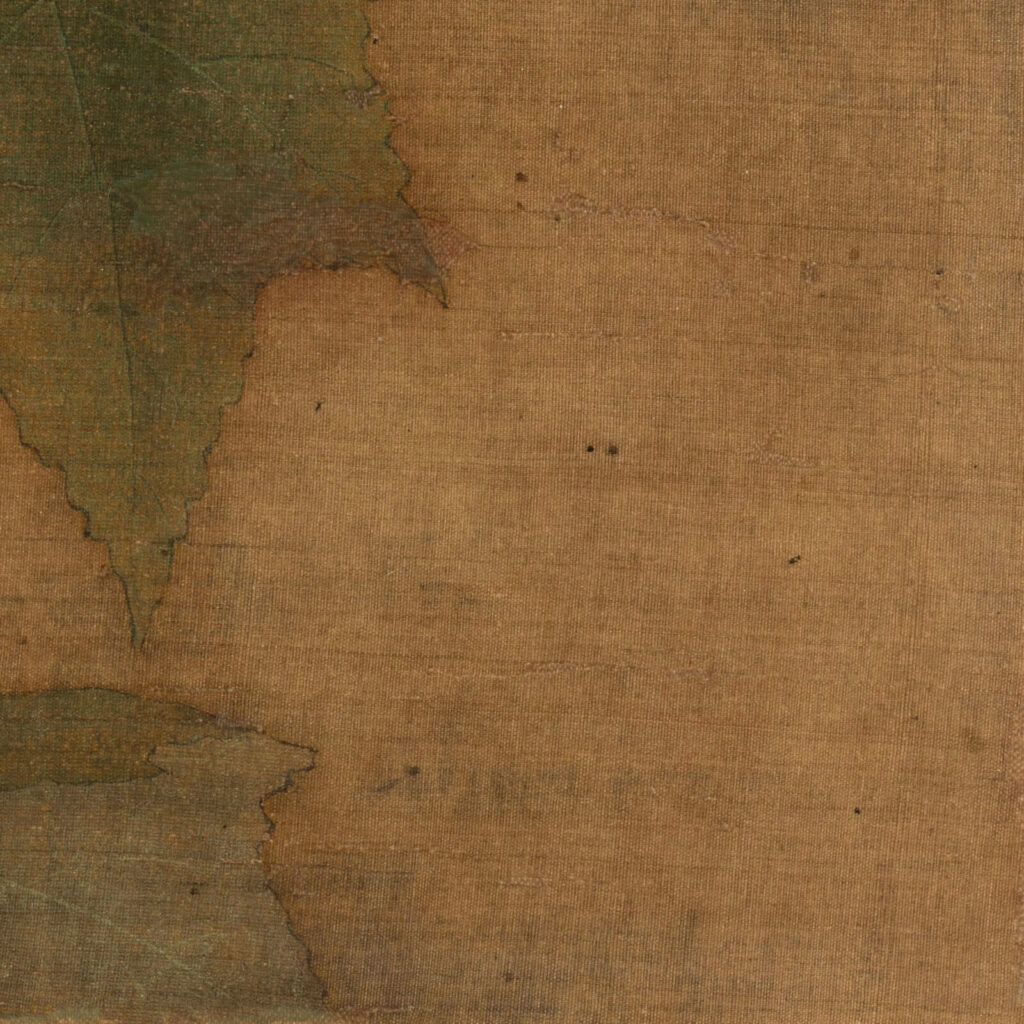
Li Di, Red and White Cotton Roses, Southern Song dynasty, 1197, color on silk, Tokyo National Museum, Tokyo, Japan. Detail.
Gardner, Helen, Fred S. Kleiner, and Christin J. Mamiya. Gardner’s Art Through the Ages. 12th ed. Belmont, CA, USA: Thomson Wadsworth, 2005.
“Red and White Cotton Roses.” Google Arts & Culture. Retrieved 13 January 2024.
“Red and White Cotton Rosemallow.” Collection. Tokyo National Museum, Tokyo, Japan. Retrieved 13 January 2024.
Sullivan, Michael. Arts of China. 5th ed. Berkeley, CA, USA: University of California Press, 2008.
DailyArt Magazine needs your support. Every contribution, however big or small, is very valuable for our future. Thanks to it, we will be able to sustain and grow the Magazine. Thank you for your help!